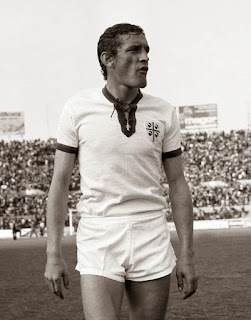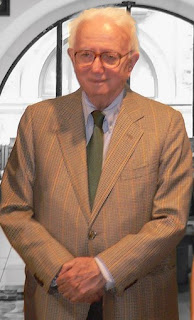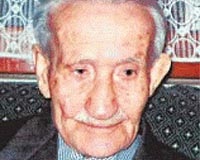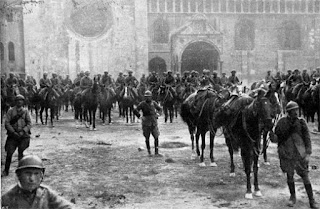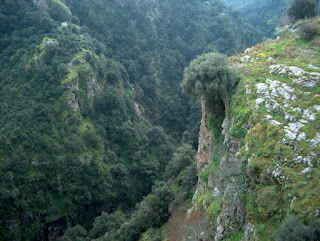Screen siren turned back on glamour roles to prove talent
 |
| Virna Lisi in a Hollywood publicity shot |
She was certainly blessed with all the physical attributes to fulfil their commercial ambitions - no less a screen goddess than Brigitte Bardot called her 'the most beautiful woman in the world' - but decided she was too good an actress to be typecast as mere window dressing or eye candy and ultimately rejected their advances.
In time she proved to herself that she made the right decision when her portrayal of the manipulative Catherine de' Medici, the Italian who was Queen of France between 1547 and 1559, in Patrice Chéreau’s 1994 film La Reine Margot won her three awards - Best Actress at the Cannes Film Festival, a César (the French equivalent of an Oscar) and the Italian film critics' award, the Nastro d'Argento (Silver Ribbon).
Born Virna Pieralisi in the town of Jesi, in the province of Ancona in Marche, where her father had a marble importing business, she moved with her family to Rome in the early 1950s and Virna's progress through school had her earmarked for a place at business college.
But on the recommendation of a friend of the family, the singer and actor Giacomo Rondinella, she was given a part in a film, E Napoli canta (And Naples sings). Just 17 years old and a natural beauty, so much did she charm Italian film producers that she was quickly in demand.
It was clear to the critics that she could act, winning praise for her performance in Sergio Corbucci's Romolo e Remo (Romulus and Remus), and she won many parts in Italian TV dramas. But it was her looks that were most sought after, earning her a lucrative contract advertising toothpaste in a TV commercial, her face accompanied by the slogan 'con quella bocca può dire ciò che vuole' (with that mouth, she can say whatever she wants).
 |
| Hollywood studio bosses wanted Virna Lisi to become the new Marilyn |
Transformed into a blue-eyed blonde temptress, Lisi starred opposite Jack Lemmon in the comedy How to Murder Your Wife, famously making her entrance by emerging from a giant cake, and had other hits with Tony Curtis, Frank Sinatra and Rod Steiger.
The press fawned over her, one magazine article describing her as 'like Marilyn Monroe and Grace Kelly put together', but although she accepted being a cover girl she soon tired of lightweight, fluffy roles. She wanted to be seen as an actress, rather than simply someone who looked good on screen.
She turned down an invitation to pose in Playboy magazine, bought herself out of her contract with United Artists and returned to Italy. Back home, as if to prove she was serious about wanting different, more challenging parts, she rejected the title role offered by Dino de Laurentiis in Roger Vadim's film Barbarella, which went instead to Jane Fonda.
It took a while to achieve her ambitions but, little by little, Lisi shed her former image. Her performance alongside Anthony Quinn and Anna Magnani in The Secret of Santa Vittoria, in which an Italian wine-producing village hides millions of bottles from plundering Nazis, was one step in her chosen direction.
She took a break into the early 1970s to spend more time with her husband and their son, Corrado, but on her return was acclaimed for her role as the sister of the philosopher Friedrich Nietzsche in Beyond Good and Evil, which won her the first of six Nastro d'Argento awards for best actress or best supporting actress.
 |
| Virna Lisi achieved her ambition where her portrayal of Catherine de' Medici won acclaim and awards |
Two years later, Lisi won an Italian Golden Globe for best actress in Follow Your Heart (1996), in which she played an elderly woman dying of cancer.
Lisi continued to work until she died in Rome in December 2014, aged 78, having filmed a television comedy earlier in the same year. Her husband, Franco Pesci, an architect she had met in Rome in the late 1950s and to whom she had been married 53 years, passed away in 2013.
Travel tip:
Rome's Colosseum, the largest and most famous Roman amphitheatre in the world, was constructed over eight years between 72 AD and 80 AD. It was capable of accommodating 50,000 spectators and had 80 entrances. It remains the city's most visited tourist attraction, ahead of St Peter's Basilica and The Pantheon.
Hotels in Rome by venere.com
 |
| The 18th century Teatro Pergolesi in Jesi |
Jesi, which was the site of a settlement in the fourth century BC, has developed as an industrial centre but maintains its cultural heritage within perfectly preserved medieval walls, built along the lines of its old Roman defences between the 13th and 14th centuries. Notable buildings include the Cathedral of San Settimio in Piazza Federico II, the nearby 12th century church of San Floriano, which once contained paintings by Lorenzo Lotto that are now housed in the Pinacoteca Civica. The Teatro Giovanni Battista Pergolesi, named in honour of the 18th century musician and composer who was born in Jesi, stands in the elegant Piazza della Repubblica.
Hotels in Jesi by Hotels.com
More reading:
Anna Magnani - Oscar-winner whose characters shared her down-to-earth qualities
Dino de Laurentiis - producer who help take Italian cinema to the world
Roberto Benigni - eccentric comedian, actor and director who scored a first for Italy
Also on this day:
1830: Death of the king of Naples and Sicily
(Photos of Virna Lisi from YouTube; photo of Teatro Pergolese from gaspa via Wikimedia Commons)
Home
